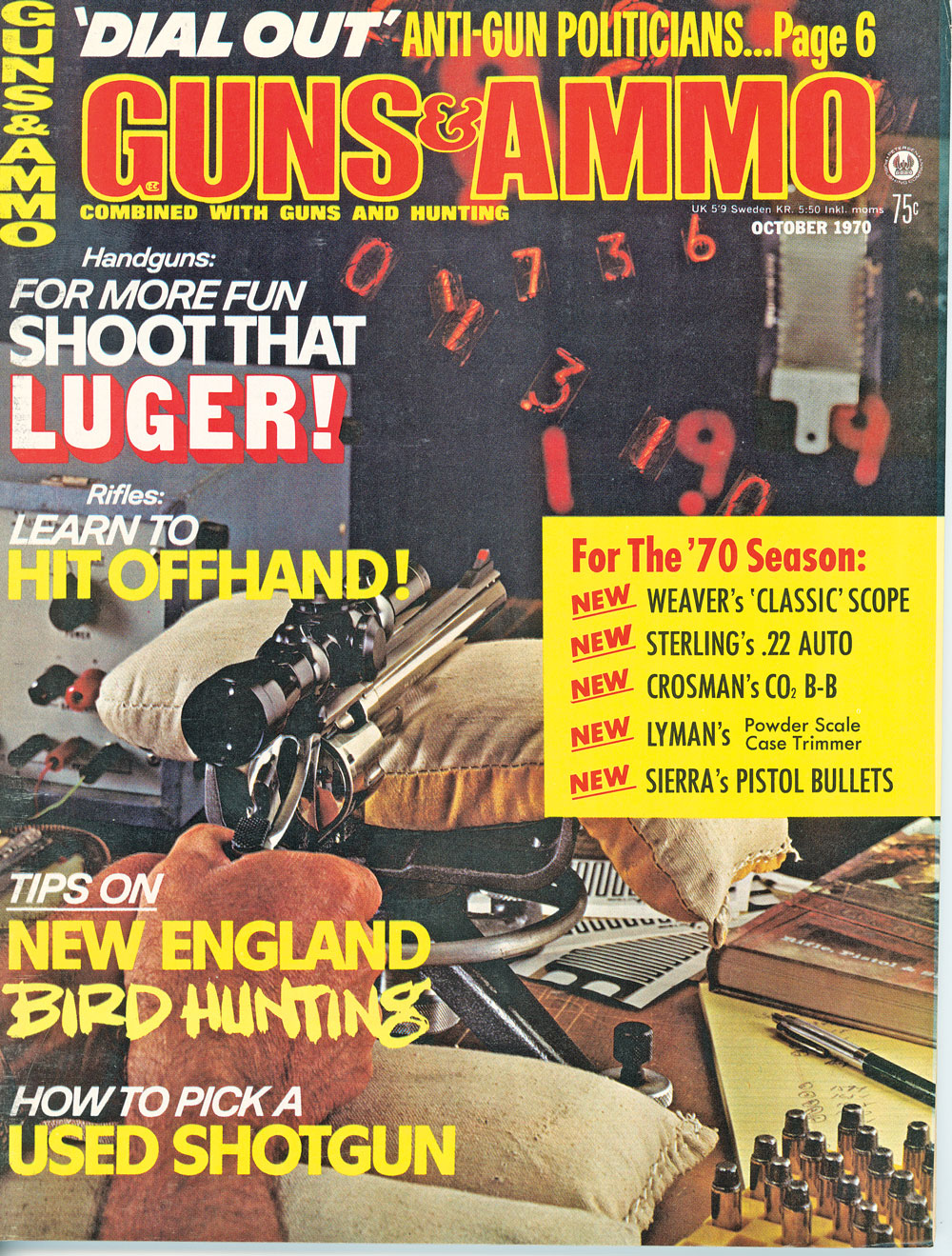
October 1970 Issue of Guns & Ammo
William L. Casteel authored “How fast do she go? and How do you know?” in the October 1970 issue of Guns & Ammo. Casteel summarized the development of various devices that measured velocity and noted the challenges faced by mathematicians to create formulas through calculus that translated measurements to comparable data. The original story is below.
Almost anyone who is interested in finding the velocity of a bullet today can do so without much bother. We have cheap and relatively accurate chronographs available, while the professional ballistics laboratories with their sophisticated equipment can make measurements of extreme accuracy. But did you ever wonder about the time before the transistor and the oscilloscope? Just how did the blackpowder burners determine which Minie ball left the muzzle fastest? Well, men have been making velocity measurements for a long time, and surprisingly accurate ones too.
Before the general use of mechanical gadgets, mathematicians were using calculus to find the muzzle velocity of cannons. About 1738 a Swiss named Bernoulli would fire a cannon vertically and count the second required for the ball to strike the ground. Then by mathematics, determine the muzzle velocity. I often wonder just where he stood while waiting for that ball to come down. The first practical device was the Ballistic Pendulum, which was invented by an Englishman, Benjaman Robins. This was a heavy pendulum into which the bullet was fired and which retained the bullet. The velocity could be determined by a formula because the velocity of the bullet was given to the pendulum, and the pendulum swing could be accurately measured. These pendulums have been modified and improved over the years. When properly used, they are surprisingly accurate.
 Still men persisted in trying to measure more precisely the
Still men persisted in trying to measure more precisely the

